 "ttyymmnn" (ttyymmnn)
"ttyymmnn" (ttyymmnn)
07/28/2015 at 13:35 • Filed to: planelopnik, planelopnik history
 8
8
 20
20
 "ttyymmnn" (ttyymmnn)
"ttyymmnn" (ttyymmnn)
07/28/2015 at 13:35 • Filed to: planelopnik, planelopnik history |  8 8
|  20 20 |
This is today’s Aviation History Speed Round , getting you caught up on milestones and important historical events in aviation from July 25 through July 28.
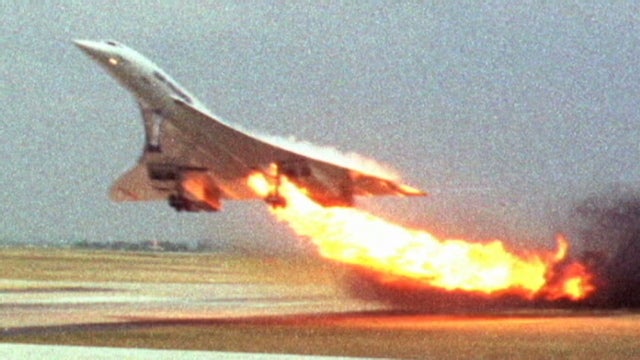
July 25, 2000 – The crash of Air France Flight 4590.
The Concorde, a joint project between the British and French to build the world’s first super sonic transport aircraft, had a stellar safety record, with only one fatal crash in its 27-year history. That single tragic accident occurred on July 25, 2000 when Air France flight 4590 (F-BTSC), a charter flight from Charles de Gaulle Airport to New York’s John F. Kennedy Airport, suffered a catastrophic fire on takeoff and crashed into a hotel near the airport, killing all 119 people on board the airliner and 4 persons on the ground. The subsequent investigation determined that the primary cause of the crash was a punctured tire caused by a strip of titanium alloy that was lying on the runway after falling from a Continental Airlines DC-10 which had departed before Flight 4590. A large chunk of the damaged tire struck the wing, leading to a rupture of a fuel tank, and the leaking fuel then ignited, causing the loss of the two port engines. Though the crew was able to restore power to one of the engines, the extra drag from the landing gear, which could not be retracted, and the reduced engine power, caused a loss of speed and the eventual crash. As a result, all Concordes were grounded until safety upgrades could be made, and the airliners returned to passenger flights 14 months later. However, the Concorde’s days were numbered, and it was retired from service in November of 2003.
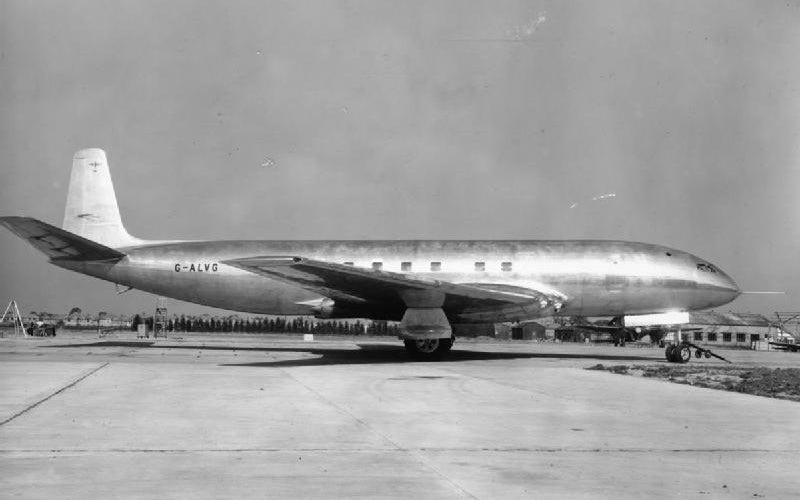
July 27, 1949 – The first flight of the de Havilland Comet. By the end of World War II, the world was entering of the Jet Age of aviation. The Americans, British and Germans had already fielded jet fighters, and the next logical step was to produce a large passenger aircraft that was powered by the new propulsion system. As early as 1943, the Brabazon Committee began looking at a large pressurized aircraft that could carry mail and passengers across the Atlantic Ocean. Out of the proposals made to the Committee came one by Sir Geoffrey de Havilland, who headed his own aircraft company and had influential government ties. A contract was awarded to develop the Type 106, which would later be known as the DH 106. While initial studies into the design of the Comet included proposals for a tailless design, de Havilland eventually settled on a more traditional configuration with a 20-degree swept wing and a straight tailplane, and featuring large, square windows for the passengers. The prototype was originally powered by four Halford H.2 Ghost engines, but those would be replaced by more powerful Rolls-Royce Avons. After rigorous testing, first prototype’s maiden flight took place on July 27, 1949, and the Comet was introduced to the world at the Farnborough Airshow later that year. Despite early success, structural weaknesses around the large windows caused a number of in-flight explosive decompressions, and the Comet was pulled from service in 1954 to investigate the cause of the hull losses. The Comet would not return to the skies until 1958, and while the accidents hurt sales, it went on to enjoy a 30-year career, and would eventually be developed into the Hawker Siddeley Nimrod maritime patrol and surveillance aircraft.
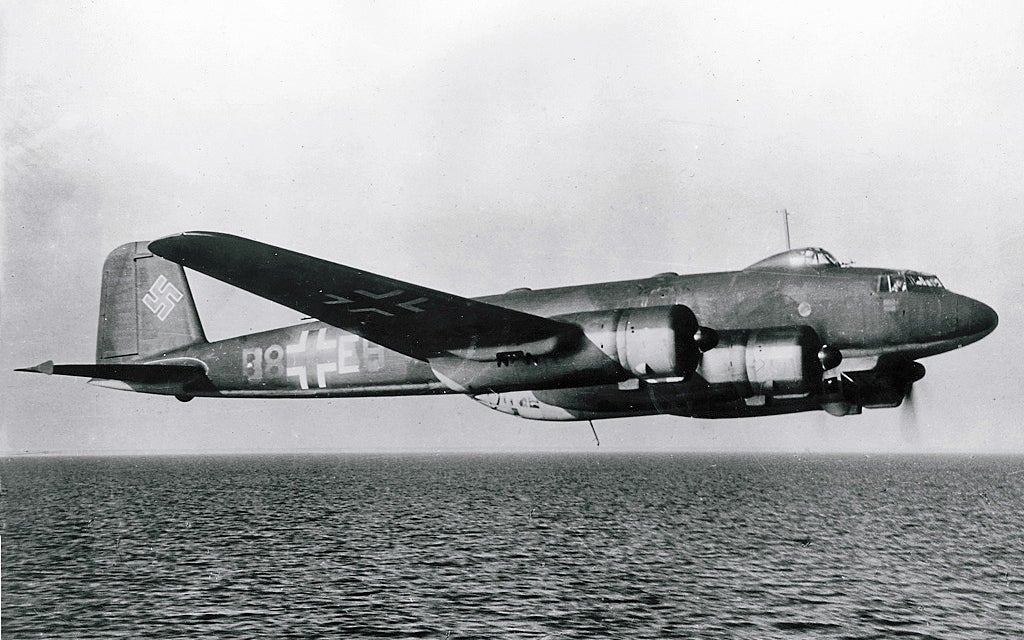
July 27, 1937 – The first flight of the Focke-Wulf Fw 200 Condor. The Fw 200 Condor, also known as the Kurier by the Germans, was a four-engine transport that grew out of a proposal by Kurt Tank for a land-based aircraft capable of carrying passengers across the Atlantic Ocean. Traditionally for that era, transatlantic flight was the domain of flying boats or float planes that could land on the water in case of emergency. But the Condor was designed to fly at the maximum altitude possible for a non-pressurized plane, just under 10,000 feet, and to assist with this high altitude flight, the Condor was featured very long wings. In 1938, the Fw 200 was the first aircraft to fly from Berlin to New York City non-stop, completing the trip in just under 25 hours. Flying east with the jet stream on the return journey, it made the trip in just under 20 hours. The Japanese placed an order for a militarized version of the Condor for maritime patrol, but with the outbreak of the war those planes were instead held in Europe for use by the Luftwaffe. The military version featured the addition of a ventral gondola which included a position for a bombardier and a bomb bay, as well as defensive armament and hardpoints on the wings for external stores. The bomb bay could carry a 2000 pound load of bombs or naval mines. The superb range of the Fw 200 made it an ideal maritime patrol aircraft, searching for Allied shipping in the Atlantic and directing U-boats to attack, and was so effective in this role that Winston Churchill referred to the Fw 200 as the “Scourge of the Atlantic.” The Condor also served as Adolf Hitler’s personal transport plane.
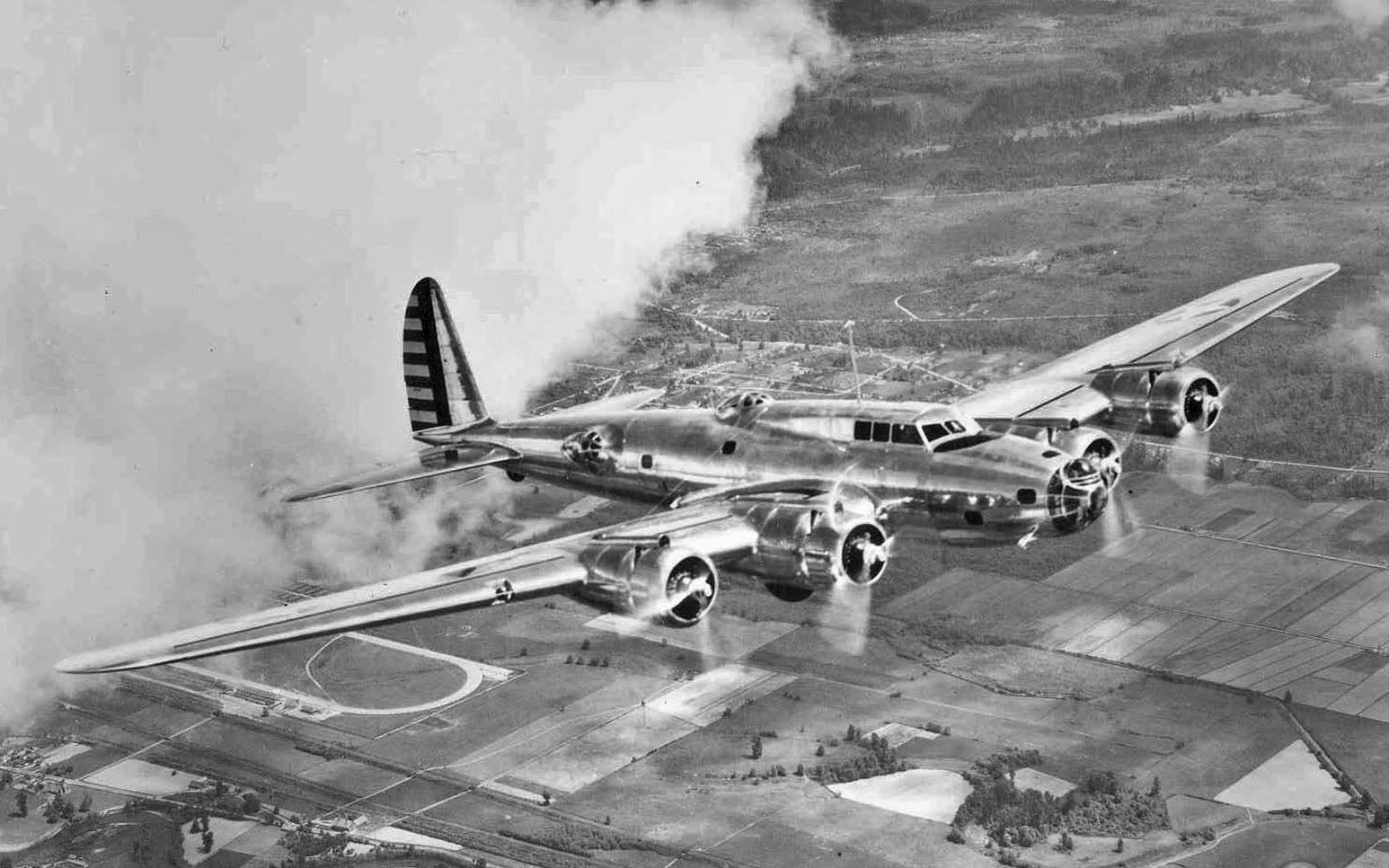
July 28, 1935 – The first flight of the Boeing Model 299, the prototype of the B-17 Flying Fortress.
The B-17 Flying Fortress has come to symbolize the American strategic bombing effort in WWII, so it’s worth noting that the bomber initially failed to secure a contract for its production. In 1934, the US Army Air Corps was looking for a new bomber to replace the Martin B-10, one that would be capable of carrying a “useful bomb load” at 10,000 feet, could stay aloft for 10 hours, and would have a speed of 200 mph. The competition took place at Wright Field in Ohio between the Douglas DB-1, the Martin Model 146, both twin-engine aircraft, and the Boeing 299, a four-engine aircraft. While USAAC brass were impressed by the performance of the Model 299, now carrying the designation YB-17, they were concerned about the higher cost of the larger bomber. Their decision was made easier when the prototype YB-17 crashed during the competition after the ground crew forgot to remove the gust locks from the aircraft’s control surfaces. With the Flying Fortress unable to complete the competition, the Air Corps chose the Martin plane by default. But this would not be the end of Boeing’s new bomber. The performance was impressive enough for the USAAC to order 13 YB-17s for further evaluation, and its performance in testing was so good that by the outbreak of WWII in December of 1941 there were already 155 Flying Fortresses in the air. Wartime production of the B-17 was carried out by Boeing, Douglas and Vega, a subsidiary of Lockheed, and eventually a staggering total of 12,731 aircraft were produced by the end of the war, with the B-17 serving in all combat theaters of WWII.
Short Take Off

July 25, 1984 – Cosmonaut Svetlana Savitskaya becomes the first woman to perform a space walk, spending over 3.5 hours in space tethered to the Salyut 7 space station.
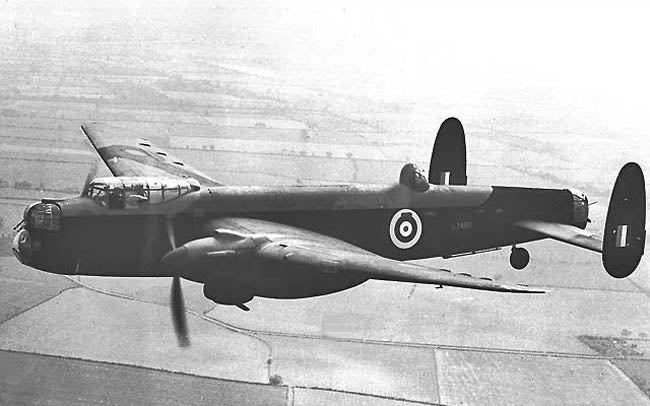
July 25, 1939 – The first flight of the Avro Manchester. The Manchester was an operational failure due to underpowered, unreliable engines. However, it would serve as the predecessor to the Avro Lancaster, one of Britain’s best bombers of the war.
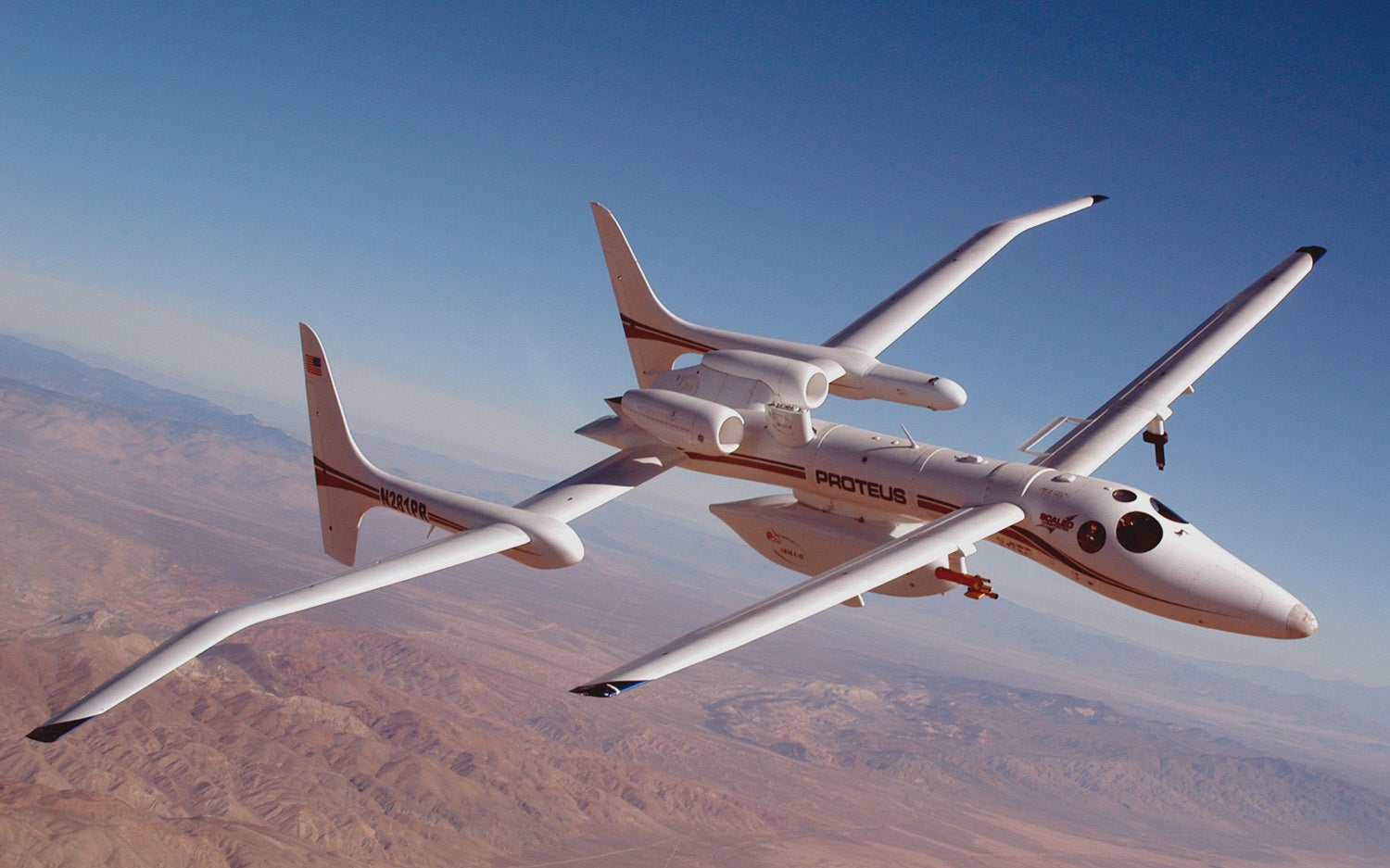
July 26, 1998 – The first flight of the Scaled Composites Proteus. Designed by Burt Rutan, the Proteus was developed as a telecommunications relay aircraft capable of orbiting over a location at 65,000 feet for more than 18 hours.
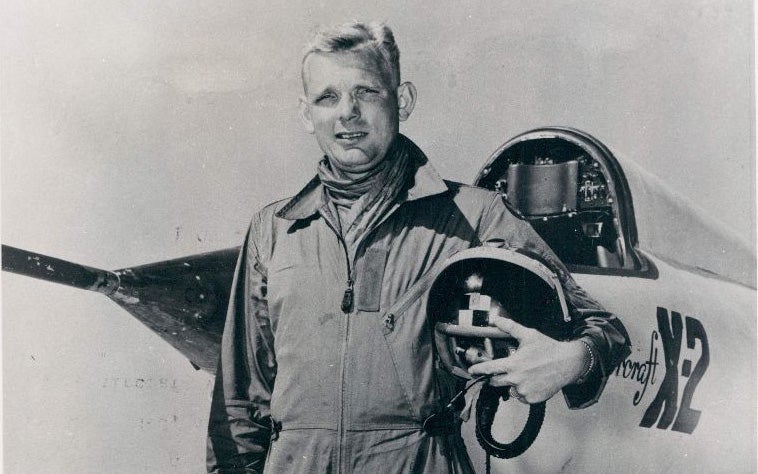
July 26, 1958 – The death of US Air Force test pilot Iven Carl Kincheloe, Jr. after failing to eject from his crippled F-104 Starfighter. Kincheloe became the first man to exceed 100,000 feet of altitude while piloting the Bell X-2, and is often credited as the first man to enter outer space.
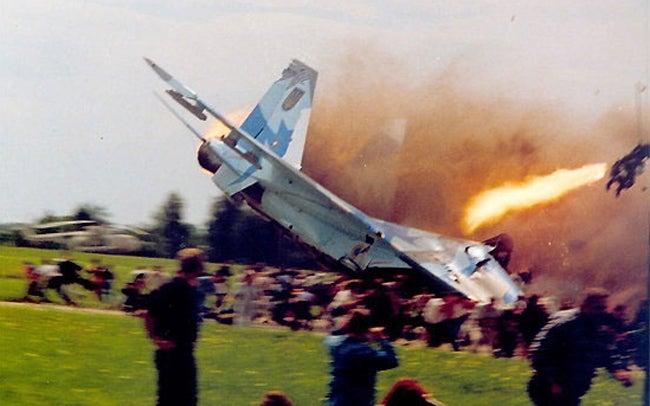
July 27, 2002 – A Ukrainian Air Force Sukhoi Su-27 fighter crashes into air show spectators at Sknyliv Airfield due to pilot error , killing 77 and injuring 543. It remains the deadliest air show accident in history. The pilots both ejected safely, though they were arrested and given prison sentences of 8 years for negligence.
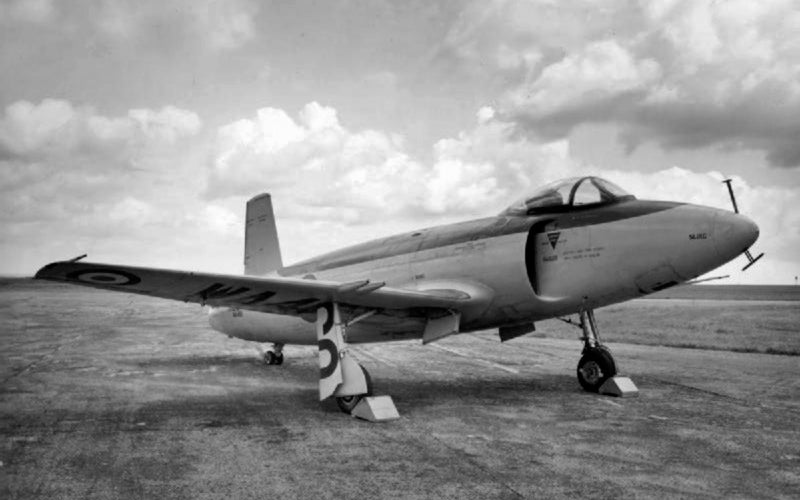
July 27, 1946 – The first flight of the Supermarine Attacker, the first jet fighter to enter service with the Royal Navy’s Fleet Air Arm. The Attacker would serve the FAA for only three years, as the rapid development of jet aircraft quickly rendered it obsolete.
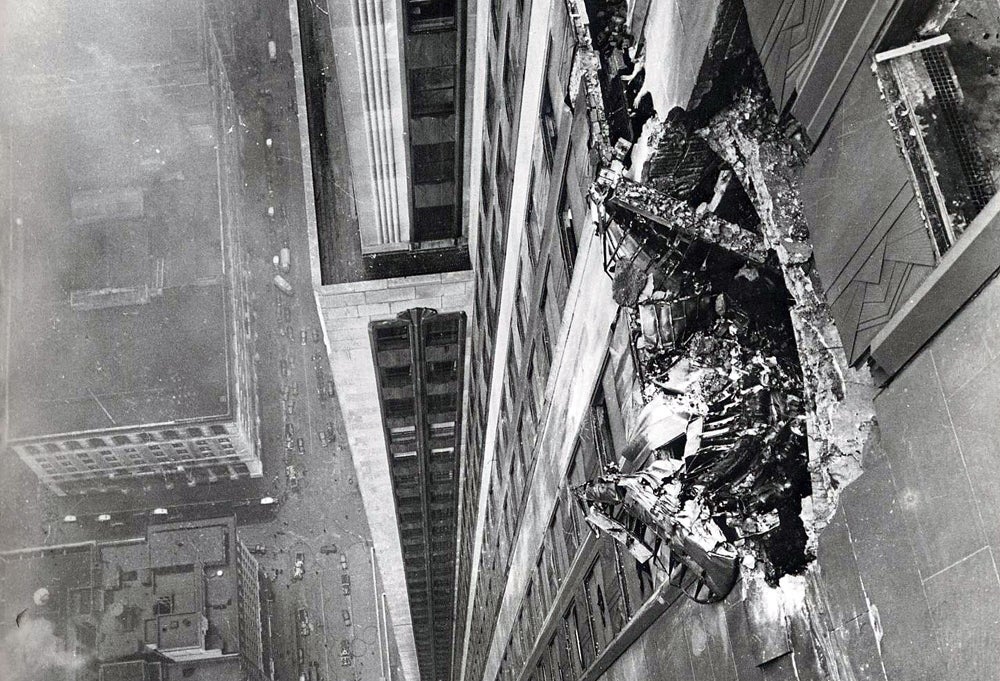
July 28, 1945 – A US Army Air Forces North American B-25D Mitchell bomber crashes into the 79th floor of the Empire State Building
in foggy conditions, killing 3 crew members, 11 civilians, and causing over $1 million in damage to the building.
(Photo by Ernie Sisto)
•••••••••••••••••••••••
If you enjoy these Aviation History posts, please let me know in the comments. And if you missed any of the past articles, you can find them all at !!!error: Indecipherable SUB-paragraph formatting!!! .
Unless otherwise credited, all photos are, or are believed to be, Public Domain, ownership could not be determined, or were taken by the author.
 Brian, The Life of
> ttyymmnn
Brian, The Life of
> ttyymmnn
07/28/2015 at 13:40 |
|
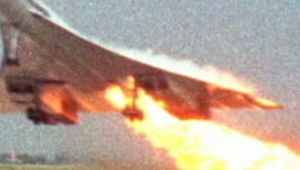
:’(
 Rusty Vandura - www.tinyurl.com/keepoppo
> ttyymmnn
Rusty Vandura - www.tinyurl.com/keepoppo
> ttyymmnn
07/28/2015 at 13:45 |
|
Good job. I believe it was the square shape of the Comet’s windows that failed after repeated compression/decompression.
 Jcarr
> ttyymmnn
Jcarr
> ttyymmnn
07/28/2015 at 13:45 |
|
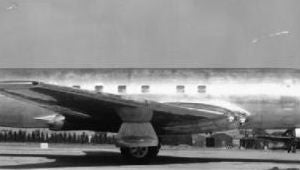
Round windows, man. Round windows.
 Jcarr
> ttyymmnn
Jcarr
> ttyymmnn
07/28/2015 at 13:49 |
|
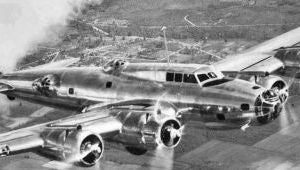
Fun fact: The Douglas A-1 Skyraider could carry as much of a bomb load as the B-17.
 ttyymmnn
> Rusty Vandura - www.tinyurl.com/keepoppo
ttyymmnn
> Rusty Vandura - www.tinyurl.com/keepoppo
07/28/2015 at 13:49 |
|
It was, particularly in the corners. Boeing was keeping a keen eye on what was going on with the Comet, and I believe it was the Comet’s experience with the square windows that caused Boeing to set the standard with oval ones. The redesigned Comets used oval windows.
 ttyymmnn
> Jcarr
ttyymmnn
> Jcarr
07/28/2015 at 13:51 |
|
And the Phantom could carry more. Those facts really blew my mind when I first learned them. I have climbed through a B-17G, and it is
really
tight and small inside.
 ttyymmnn
> Jcarr
ttyymmnn
> Jcarr
07/28/2015 at 13:54 |
|
I don’t think you can really fault them, since they were basically taking all they knew about propeller planes—with square windows—and strapping jets on. It was all very much uncharted territory.
 Jcarr
> ttyymmnn
Jcarr
> ttyymmnn
07/28/2015 at 13:57 |
|
Yep. A healthy mix of rigorous calculation and “screw it, let’s see if this works”.
 Jcarr
> ttyymmnn
Jcarr
> ttyymmnn
07/28/2015 at 14:00 |
|
Speaking of the Phantom, you should check out the Warbirds in Review videos from Oshkosh. They’re all free on livestream.com here: http://livestream.com/accounts/11327…
The F-4 one is done with Robin Olds daughter, Christina. There’s also a really great one on the F-100 with Dick Rutan and Chuck Boyd.
 ttyymmnn
> Jcarr
ttyymmnn
> Jcarr
07/28/2015 at 14:00 |
|
Thanks for the tip. I’ll check it out!
 RallyWrench
> ttyymmnn
RallyWrench
> ttyymmnn
07/28/2015 at 14:01 |
|
Wow, the Proteus is nuts. Just read the Wiki on it, what an aircraft.
 ttyymmnn
> RallyWrench
ttyymmnn
> RallyWrench
07/28/2015 at 14:02 |
|
Burt Rutan is a genius. Period.
 McMike
> Jcarr
McMike
> Jcarr
07/28/2015 at 14:08 |
|
Round windows, man. Round windows.
We just orderd a new front door, and made sure we ordered a round window.

 Jcarr
> McMike
Jcarr
> McMike
07/28/2015 at 14:15 |
|
Don’t want to get sucked out when the Avon lady comes...
 911e46z06
> ttyymmnn
911e46z06
> ttyymmnn
07/28/2015 at 22:40 |
|
Well done as always. This remains the best repeat segment in Oppo history.
 ttyymmnn
> 911e46z06
ttyymmnn
> 911e46z06
07/28/2015 at 22:46 |
|
Thanks. That means a lot. It's a lot of work to keep it going, but I'm having a blast doing it. Next post on Friday!
 sunnydaysam
> ttyymmnn
sunnydaysam
> ttyymmnn
07/29/2015 at 09:45 |
|
Thanks for another great post, ttyymmnn! Even an old avnut like me learns something new from you every time.
 ttyymmnn
> sunnydaysam
ttyymmnn
> sunnydaysam
07/29/2015 at 09:51 |
|
Thanks for the kind words. I learn something myself with every one of these.
 You can tell a Finn but you can't tell him much
> ttyymmnn
You can tell a Finn but you can't tell him much
> ttyymmnn
07/29/2015 at 12:05 |
|
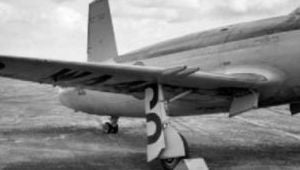
A jet powered tail dragger just looks weird.
 You can tell a Finn but you can't tell him much
> Jcarr
You can tell a Finn but you can't tell him much
> Jcarr
07/29/2015 at 12:07 |
|
Fatigue wasn’t really understood then. It is still one of those things that we tend to use empirical modeling to account for because it is too complex for analytical models.